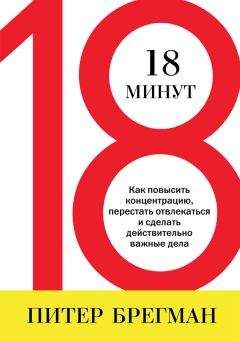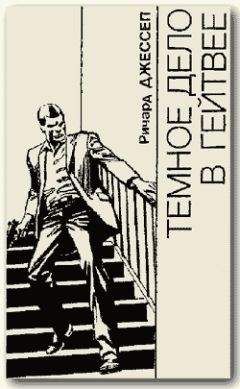Ричард convertfileonline.com - _2016_02_09_21_40_03_404

Скачивание начинается... Если скачивание не началось автоматически, пожалуйста нажмите на эту ссылку.
Жалоба
Напишите нам, и мы в срочном порядке примем меры.
Описание книги "_2016_02_09_21_40_03_404"
Описание и краткое содержание "_2016_02_09_21_40_03_404" читать бесплатно онлайн.
[43] Gerard Marlet and Clemens van Woerkens, “Skills and Creativity in a Cross-section of Dutch Cities,” Utrecht School of Economics, Tjalling C. Koopmans Research Institute, Discussion Paper Series 04—29, October 2004; published as, “The Dutch Creative Class and How It Fosters Urban Employment Growth,” Urban Studies 44 (13) (December 2007): 2605–2626.
Глава 13
[1] Richard Florida, Flight of the Creative Class. New York: HarperCollins, 2005; Richard Florida and Irene Tinagli, Europe in the Creative Age. London: Demos, 2004, at www.demos.co.uk/publications/creativeeurope.
[2] См. Richard Florida, Charlotta Mellander, and Kevin Stolarick, “The 2011 Global Creativity Index,” University of Toronto, Rotman School of Management, Martin Prosperity Institute, October 2011.
[3] См. материалы проекта Европейского фонда научных исследований под названием «Technology, Talent and Tolerance in European Cities: A Comparative Analysis» («Технологии, талант и толерантность в европейских городах: сравнительный анализ»). Работу над этим проектом, которая продолжалась три года (2004–2006 гг.), координировал Бьорн Асхейм из Лундского университета в Швеции, а курировал его Мерик Гертлер из Университета Торонто (сейчас работает в Университете Осло). В других странах реализацией этого проекта занимались Рон Бошма из Утрехтского университета; Филип Кук их Университета Кардиффа; Майкл Фритш из Фрайбергского технического университета (сейчас работает в Йенском университете имени Фридриха Шиллера); Арне Исаксен из Университета Агдера (Норвегия); Марк Лорензен из Копенгагенской школы бизнеса (Дания) и Маркку Сотораута из Университета Тампере (Финляндия). В интернете эти данные можно найти здесь: http://www.esf.org/activities/eurocores/running-programmes/ecrp/ecrp-scheme-2001-2004.html. См. также: Economic Geography,Volume 85, Number 4 October 2009, pp. 355—442.) Данные по французским городским агломерациям предоставил Себастьен Шантело из Высшей школы бизнеса в Бретани.
[4] См. Daniel Senor and Saul Singer, Start-Up Nation: The Story of Israel’s Economic Miracle. NewYork: Twelve, 2009 (издана на русском языке: Сенор Д., Сингер С. Нация умных людей. История израильского экономического чуда. М. : Карьера Пресс, 2012).
[5] См. Richard Florida and Gary Gates, “Technology and Tolerance,” Brookings Review 20 (1) (2002): 32–36; Marcus Noland, “Popular Attitudes, Globalization and Risk,” International Finance 8 (2) (2005): 199–229.
[6] Коэффициент корреляции глобального индекса креативности с другими показателями: с ВВП на душу населения — 0,84, с глобальным уровнем конкурентоспособности — 0,79, с глобальным индексом предпринимательства — 0,81, с индексом счастья — 0,74 и с индексом неравенства доходов — −0,43.
Глава 14
[1] Robert Putnam, Bowling Alone: The Collapse and Revival of American Community. New York: Simon and Schuster, 2000. См. также: Putnam, “The Prosperous Community: Social Capital and Public Life” American Prospect (Spring 1993): 35–42; “The Strange Disappearance of Civic America,” American Prospect (Winter 1996): 34–38.
[2] См. Mark Granovetter, Getting a Job: A Study of Contacts and Careers. Cambridge: Harvard University Press, 1974; “Economic Action and Social Structure: The Problem of Embeddedness,” American Journal of Sociology 91 (3) (November 1985): 481–510; “The Nature of Economic Relationships,” in Richard Swedberg, ed., Explorations in Economic Sociology. New York: Russell Sage Foundation, 1993, pp. 3–41; “A Theoretical Agenda for Economic Sociology,” in Mauro Guillen, Randall Collins, Paula England, and Marshall Meyer, eds., New Directions in Sociology. New York: Russell Sage Foundation, 2002. См. также: Peter Marsden and Karen Campbell, “Measuring Tie Strength,” Social Forces 63 (2) (December 1984): 482–501.
[3] Описание того, как социальные связи влияют на инновации и готовность пойти на риск, можно найти здесь: Brian Uzzi, “Social Structure and Competition in Interfirm Networks: The Paradox of Embeddedness,” Administrative Science Quarterly 42 (1997): 35–67.
[4] Краткое описание их вклада представлено в классической статье Луиса Вирта «Урбанизм как образ жизни». См.: Louis Wirth, “Urbanism as a Way of Life,” American Journal of Sociology 44, July 1, 1938, pp. 1–24.
[5] Walter Benjamin, The Arcades Project, trans. Howard Eiland and Kevin McLaughlin. Cambridge: Harvard University Press, 2000.
[6] Cesar Grana, Bohemian and Bourgeois. New York: Basic Books, 1964, pp. 135–136; расширенное и переработанное издание: Modernity and Its Discontents: French Society and the French Man of Letters in the Nineteenth Century. New York: Harper Torchbooks, 1967.
[7] Cesar Grana, Bohemian and Bourgeois. New York: Basic Books, 1964, pp. 135–136; расширенное и переработанное издание: Modernity and Its Discontents: French Society and the French Man of Letters in the Nineteenth Century. New York: Harper Torchbooks, 1967, с. 237.
[8] Carol Coletta and Joe Cortright, “The Young and the Restless in a Knowledge Economy,” CEOs for Cities, 2005 and 2011 update. Available online at www.ceosforcities.org/work/young_and_the_restless.
[9] См. Richard Lloyd and Terry Nichols Clark, “The City as an Entertainment Machine,” in Kevin Fox Gotham, ed., Critical Perspectives on Urban Redevelopment: Research in Urban Sociology, vol. 6. Oxford: JAI Press/Elsevier, 2001, pp. 357–378.
[10] Erica Coslor, “Work Hard, Play Hard: The Role of Nightlife in Creating Dynamic Cities,”неопубликованная работа, Heinz School of Public Policy and Management, Carnegie Mellon University, Pittsburgh, December 2001.
[11] Miller McPherson, Lynn Smith-Lovin, and Matthew E. Brashears, “Social Isolation in America: Changes in Core Discussion Networks over Two Decades,” American Sociological Review 71 (3) (June 2006): 353–375.
[12] Ethan Watters, Urban Tribes: Are Friends the New Family? New York: Bloomsbury USA, 2004.
[13] Ray Oldenburg, The Great Good Place: Cafes, Coffee Shops, Bars, Hair Salons and Other Hangouts at the Heart of a Community. NewYork: MarloweandCompany, 1989 (издана на русском языке: Ольденбург Р. Третье место. Кафе, кофейни, книжные магазины, бары, салоны красоты и другие места «тусовок» как фундамент сообщества. М. : Новое литературное обозрение, 2014).
[14] Richard Florida, “The Fourth Place,” Daily Beast, July 6, 2010, at www.thedailybeast.com/articles/2010/07/06/starbucks-offers-free-wi-fi-and-the-fourth-place-for-work.html.
[15] “The Singles Map,” National Geographic, February 2007.
[16] Из личного интервью автора, весна 2001 года.
[17] Bonnie Menes Kahn, Cosmopolitan Culture: The Gilt-Edged Dream of a Tolerant City. New York: Simon and Schuster, 1987.
[18] Из личного интервью автора, зима 2001 года.
[19] Этим термином я обязан бывшему студенту Университета Карнеги — Меллон Ленну Кано.
[20] Simon Frith, Performing Rites: On the Value of Popular Music. Oxford: Oxford University Press, 199), p. 273.
[21] Richard Caves, Creative Industries: Contracts Between Art and Commerce. Cambridge: Harvard University Press, 2002. См. Также: Elizabeth Currid, The Warhol Economy. Princeton: Princeton University Press, 2007.
[22] См.: Terry Nichols Clark, “Making Culture into Magic: How Can It Bring Tourists and Residents?” International Review of Public Administration 12 (January 2007): 13–25. См. Также: Terry Nichols Clark, Lawrence Rothfield, and Daniel Silver, eds., Scenes (Chicago: University of Chicago, 2007). См. также Richard Lloyd and Terry Nichols Clark, “The City as an Entertainment Machine,” Research in Urban Sociology: Critical Perspectives on Urban Redevelopment 6 (2001): 357–378.
[23] Daniel Silver, Terry Nichols Clark, and Christopher Graziul, “Scenes, Innovation, and Urban Development,” in David Emanuel Andersson, Ake Emanuel Andersson, and Charlotta Mellander, eds., Handbook of Creative Cities. Cheltenham, UK: Edward Elgar, 2011, pp. 229–258.
[24] Manuel Castells, The Power of Identity: The Information Age: Economy, Society, and Culture, vol. 1. Oxford: Blackwell Publishers, 1997.
[25] Daniel Gilbert, Stumbling on Happiness. NewYork: Knopf, 2006 (издана на русском языке: Гилберт Д. Спотыкаясь о счастье. М. : Альпина Паблишер, 2015).
[26] См.: материалы исследования Knight Foundation «Soul of the Community»: http://www.soulofthecommunity.org/.
[27] “What Attaches People to Their Communities?” Gallup Organization and Knight Foundation, www.soulofthecommunity.org/. См. Также: Richard Florida, Charlotta Mellander, and Kevin Stolarick, “Beautiful Places, The Role of Perceived Aesthetic Beauty in Community Satisfaction,” Regional Studies 45 (1) (2011): 33–48; и Richard Florida, Charlotta Mellander, and Kevin Stolarick, “Here to Stay: The Effects of Community Satisfaction on the Decision to Stay,” Spatial Economic Analysis 6 (1) (2011): 5–24.
[28] См.: Daniel Hamermesh, Beauty Pays: Why Attractive People Are More uccessful. Princeton: Princeton University Press, 2011; см. Также: Daniel Hamermesh and Jeff Biddle, “Beauty and the Labor Market,” American Economic Review 84 (5): 1174–1194.
Глава 15
[1] Peter Loftus, “Location, Location, Location,” Wall Street Journal, October 15, 2001.
[2] Joseph Cortright and Carol Coletta, The Young and the Restless in a Knowledge Economy, www.ceosforcities.org, 2005 and 2011 Update.
[3] Sam Roberts, “In Surge in Manhattan Toddlers, Rich White Families Lead Way,” New York Times, March 23, 2007.
[4] The Segmentation Company, a division of Yankelovich, “Attracting the Young College-Educated to Cities,” CEOs for Cities, May 11, 2006, www.ceosforcities.org.
[5] Gary Gates, “How Many People Are Lesbian, Gay, Bisexual and Transgender?” UCLA Williams Institute, April 2011, williamsinstitute.law.ucla.edu/research/census-lgbt-demographics-studies/how-many-people-are-lesbian-gay-bisexual-and-transgender/.
[6] См. Richard Florida, “The Role of the University: Leveraging Talent, Not Technology”, Issues in Science and Technology (Summer 1999), www.issues.org/15.4/florida.htm. См. также Richard Florida, Brian Knudsen, and Kevin Stolarick, “Education in the Creative Economy: Knowledge and Learning in the Age of Innovation,” in Daniel Araya, ed., The University and the Creative Economy. New York: Peter Lang, 2010, pp. 45–76.
[7] См.: John Siegfried and Andrew Zimbalist, “The Economics of Sports Facilities and Their Communities,” Journal of Economic Perspectives 14 (3) (Summer 2000): 95–114.
[8] Mancur Olson, The Rise and Decline of Nations: Economic Growth, Stagflation, and Social Rigidities. New Haven: Yale University Press, 1986; The Logic of Collective Action: Public Goods and the Theory of Groups. Cambridge: Harvard University Press, 1971; “Big Bills Left on the Sidewalk: Why Some Nations Are Rich, and Others Poor,” Journal of Economic Perspectives 10 (2) (1996): 2–24; см. Также: Jonathan Rauch, Demosclerosis: The Silent Killer of American Government. New York: Crown Publishing Group, 1994.
[9] Из предисловия к австралийскому изданию книги.
[10] Paul Graham, “Why Startup Hubs Work,” October 2011, at http://paulgraham.com/hubs.html.
[11] Steven Malanga, “The Curse of the Creative Class,” City Journal (Winter 2004).
[12] Jamie Peck, “Struggling with the Creative Class,” International Journal of Urban and Regional Research 29 (4) (December 2005): 740–770.
[13] Alec MacGillis, “The Ruse of the Creative Class,” American Prospect (January 2010), http://prospect.org/article/ruse-creative-class-0.
[14] Richard Florida, “How the Crash Will Reshape America,” Atlantic (March 2009), www.theatlantic.com/magazine/archive/2009/03/how-the-crash-will-reshape-america/307293/.
[15] Ryan Avent, “More on the Urban Economy,” Bellows, January 6, 2010; www.ryanavent.com/blog/?p=2270.
Подписывайтесь на наши страницы в социальных сетях.
Будьте в курсе последних книжных новинок, комментируйте, обсуждайте. Мы ждём Вас!
Похожие книги на "_2016_02_09_21_40_03_404"
Книги похожие на "_2016_02_09_21_40_03_404" читать онлайн или скачать бесплатно полные версии.
Мы рекомендуем Вам зарегистрироваться либо войти на сайт под своим именем.
Отзывы о "Ричард convertfileonline.com - _2016_02_09_21_40_03_404"
Отзывы читателей о книге "_2016_02_09_21_40_03_404", комментарии и мнения людей о произведении.













